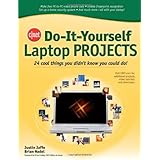
Average Reviews:

(More customer reviews)...or maybe after a generation of Windows operating systems, we're simply immune to assaults by Windows products on the sensibilities of computer users (especially users more interested in doing things with their data files than tweaking their operating systems).
In either case, "Windows 7 Annoyances" is less a catalog of serious Windows 7 annoyances, and more a compendium of advanced Windows 7 features, trips and tricks.
The features and solutions it offers are thorough, and described in superb technical detail. The target audience for this book is clearly power users confident in the deep (and sometimes scary) areas of Windows 7. Proof of this is found in Chapter 3, 72 pages devoted exclusively to the Windows registry. David Karp offers exhaustive descriptions and prescriptions of the Windows 7 registry. He does this very well, but in giving registry tweaks this much emphasis he is speaking to advanced power users of computers. Most Windows users are probably better served by avoiding working in the registry except for last-ditch efforts to correct their worst problems. Registry modifications bring with them the true potential to inflict serious unintended consequences to your computer, and I suggest that the book's biggest shortcoming is in not giving this potential risk enough emphasis.
Similarly, Chapter 9 is focused entirely on use of text-based command prompts. These are arguably tools of the power user looking to work faster (or deeper) than a GUI permits.
Otherwise, the book is a delightful guide to things about Windows 7 that Microsoft forgot to tell us. It describes the different versions of Windows 7, gives sound advice on making files and folders behave consistently, provides a tutorials on media files, offers troubleshooting and diagnostic tools, and walks you patiently through networking/Internet concepts and security issues.
Two appendices provide overviews of the BIOS (the basic input output system, which allows a personal computer to boot into ANY operating system), and TCP/IP, the standards that allow data to flow over the Internet regardless of the hardware and software packages that are sending and receiving them.
If you're not *seriously* annoyed by Windows 7, then this book may be more than you need, and you might want to consider Windows 7: The Missing Manual instead.
But if you're a power user and want to increase your control over Windows 7 (or if you are the go-to person for fixing the computer problems of family and friends), then this book will be a good addition to your troubleshooting toolkit.
Click Here to see more reviews about: Windows 7 Annoyances: Tips, Secrets, and Solutions
Windows 7 may be faster and more stable than Vista, but it's a far cry from problem-free. David A. Karp comes to the rescue with the latest in his popular Windows Annoyances series. This thorough guide gives you the tools you need to fix the troublesome parts of this operating system, plus the solutions, hacks, and timesaving tips to make the most of your PC.
Streamline Windows Explorer, improve the Search tool, eliminate the Green Ribbon of Death, and tame User Account Control prompts
Explore powerful Registry tips and tools, and use them to customize every aspect of Windows and solve its shortcomings
Squeeze more performance from your hardware with solutions for your hard disk, laptop battery, CPU, printers, and more
Stop crashes, deal with stubborn hardware and drivers, fix video playback issues, and troubleshoot Windows when it won't start
Protect your stuff with permissions, encryption, and shadow copies
Secure and speed up your wireless network, fix networking woes, make Bluetooth functional, and improve your Web experience
Get nearly all of the goodies in 7 Ultimate, no matter which edition you have
"Blunt, honest, and awesome." --Aaron Junod, Manager, Integration Systems at Evolution Benefits
"This could be the best [money] you've ever spent." --Jon Jacobi, PC World
"To use Windows is to be annoyed -- and this book is the best way to solve any annoyance you come across. It's the most comprehensive and entertaining guide you can get for turning Windows into an operating system that's a pleasure to use." --Preston Gralla, author of Windows Vista in a Nutshell, and Computerworld contributing editor
Click here for more information about Windows 7 Annoyances: Tips, Secrets, and Solutions





















